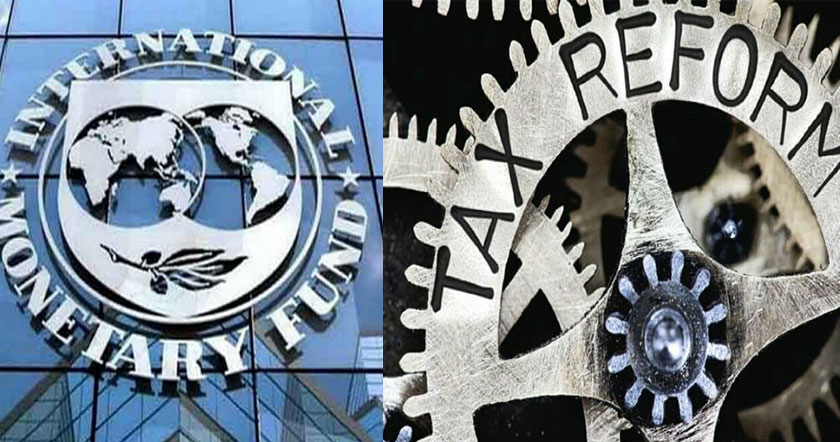A survey on Drug Use in Afghanistan, issued 21 June 2010 by the United Nations Office on Drugs and Crime (UNODC), showed that around one million Afghans (age 15-64) suffer from drug addiction. At eight per cent of the population, this rate is twice the global average. Many Afghans are taking drugs as a kind of self-medication against the hardships of life.
Opium prices have surged to nearly $115-125 per kilogram from a stable US$25-$35 in some areas. Antonia Maria Costa, head of the United Nations Office on Drugs and Crime (UNODC), reported in May 2010 that Afghanistan's expected opium harvest for the 2010 season will be three-quarters of last year's output - a substantial reduction of 2,600 tonnes. A naturally occurring blight exacerbated by climatic conditions is behind this season's failed harvest. The blight was spread by aphids, small plant-eating bugs that can carry fungi and viruses. Evidence points to a fungus, possibly macrosporium papaverus, that causes root and capsule rot. Taliban insurgents blamed international forces for spraying unknown chemicals over southern Afghanistan. Previous efforts sought to "weaponize" fusarium oxysporum, a plant fungus capable of devouring coca bushes, poppy fields and marijuana plants. The project was terminated in 2002 without the fungus being used.
By one UN estimate, the Taliban raise up to $300-million a year from the drug trade. Retail sales worldwide of Afghan heroin are said by some to be of the order of 200 billion dollars a year, but this number is surely far too high. By one account, consumer expenditure figures for Western Europe could be around $20 billion for heroin, and in the year 2001 ONDCP estimated total US consumer spending on heroin at about $12 billion. In 2005 the United Nations Office on Drugs and Crime estimated the total value of the global opium and heroin market to be valued at $65 billion, with about 11 million heroin users worldwide. [United Nations, ”2005 World Drug Report,” Office on Drugs and Crime, June 2005, pg. 132.]
The United Nations reported in 2008 that the retail price of heroin in the United States has fluctuated between about $100 and $200 per gram in recent years, while retail prices in Europe have fluctated between $70 and $100 per gram in recent years. Wholesale prices are generally about half of retail prices. Over the past two decades, total global opium producation has consistently averaged about 5,000 metric tons each year, or about 500 tons of heroin. Of this, about 20% is consistently seized by law enforcement, leaving about 400 tons available to consumers [that is, about 400,000,000 grams, which at European street prices would be worth between $30 billion and $40 billion, while at US street prices it would be between $40 billion and $80 billion.
Trends in opium poppy cultivation in Afghanistan have been on an upward trajectory since the early 1990s, accelerating quickly after the fall of the Taliban government. In 2007, opium poppy cultivation reached an all-time high of 193,000 ha with the majority of cultivation (69 percent) occurring in the five southern provinces. Concomitant with the rise in opium poppy cultivation has been the rise in opium production. 2007 witnessed a substantial 34 percent increase in opium production reaching 8,200 metric tons. This increase in production in Afghanistan combined with effective efforts at limiting production in other countries has made Afghanistan virtually the sole supplier of opium, accounting for 93 percent of global production.
There are different qualities of opium. In Nangarhar, for instance, there is 'spin', 'barani' and 'sur' opium. Spin and barani opium are considered poor quality, affected by excess ground water (spin) or rainfall during its collection (barani). 'Sur' opium, which has a dark red or brown colour, is regarded to be of high quality and fetches a price that is twice the price of spin or barani opium. In southern Afghanistan, other qualities are traded. There is tor (black), sur (red) and jar (yellow) opium. The best quality in southern Afghanistan is not sur but tor opium; the lowest quality is jar. Again, the highest quality fetches a price that is about twice the price of the lowest quality.
Approximately two-thirds of the opium produced in Afghanistan is converted into heroin or morphine before export. The usual 10:1 opium to heroin transformation ratio is not appropriate for Afghanistan. There are indeed recipes that only require 7 kilograms of Afghan opium to produce 1 kilogram of morphine and thus 1 kilogram of brown heroin. Similarly, research from the early 1990s in Pakistan suggested that in order to produce brown heroin, the usual ratio reported by clandestine laboratory operators was only 6 kilograms of opium for 1 kilogram heroin.
Overall income from opiate trafficking out of Afghanistan to neighboring countries could well have exceeded $1 billion in 2000 by a significant margin. Profits of up to $1.7 billion could have been theoretically possible. For many years in the 1990s, this kind of income went into the coffers of warlords who mainly used it for funding their private militias, and for the purchase of weapons that had to be imported.
Poverty is the most common reason given by farmers for cultivating poppy (29 percent). Other unmet economic needs including the "possibility of getting a loan" (16 percent) and "high wedding costs" (13 percent) are other frequently cited reasons for cultivating poppy. However, it should be noted that the main opium producing region is the comparatively wealthier south which is endowed with superior soil conditions than the rest of the country and thus allows for a range of other crops to be cultivated in place of opium poppy.
Opium prices have surged to nearly $115-125 per kilogram from a stable US$25-$35 in some areas. Antonia Maria Costa, head of the United Nations Office on Drugs and Crime (UNODC), reported in May 2010 that Afghanistan's expected opium harvest for the 2010 season will be three-quarters of last year's output - a substantial reduction of 2,600 tonnes. A naturally occurring blight exacerbated by climatic conditions is behind this season's failed harvest. The blight was spread by aphids, small plant-eating bugs that can carry fungi and viruses. Evidence points to a fungus, possibly macrosporium papaverus, that causes root and capsule rot. Taliban insurgents blamed international forces for spraying unknown chemicals over southern Afghanistan. Previous efforts sought to "weaponize" fusarium oxysporum, a plant fungus capable of devouring coca bushes, poppy fields and marijuana plants. The project was terminated in 2002 without the fungus being used.
By one UN estimate, the Taliban raise up to $300-million a year from the drug trade. Retail sales worldwide of Afghan heroin are said by some to be of the order of 200 billion dollars a year, but this number is surely far too high. By one account, consumer expenditure figures for Western Europe could be around $20 billion for heroin, and in the year 2001 ONDCP estimated total US consumer spending on heroin at about $12 billion. In 2005 the United Nations Office on Drugs and Crime estimated the total value of the global opium and heroin market to be valued at $65 billion, with about 11 million heroin users worldwide. [United Nations, ”2005 World Drug Report,” Office on Drugs and Crime, June 2005, pg. 132.]
The United Nations reported in 2008 that the retail price of heroin in the United States has fluctuated between about $100 and $200 per gram in recent years, while retail prices in Europe have fluctated between $70 and $100 per gram in recent years. Wholesale prices are generally about half of retail prices. Over the past two decades, total global opium producation has consistently averaged about 5,000 metric tons each year, or about 500 tons of heroin. Of this, about 20% is consistently seized by law enforcement, leaving about 400 tons available to consumers [that is, about 400,000,000 grams, which at European street prices would be worth between $30 billion and $40 billion, while at US street prices it would be between $40 billion and $80 billion.
Trends in opium poppy cultivation in Afghanistan have been on an upward trajectory since the early 1990s, accelerating quickly after the fall of the Taliban government. In 2007, opium poppy cultivation reached an all-time high of 193,000 ha with the majority of cultivation (69 percent) occurring in the five southern provinces. Concomitant with the rise in opium poppy cultivation has been the rise in opium production. 2007 witnessed a substantial 34 percent increase in opium production reaching 8,200 metric tons. This increase in production in Afghanistan combined with effective efforts at limiting production in other countries has made Afghanistan virtually the sole supplier of opium, accounting for 93 percent of global production.
There are different qualities of opium. In Nangarhar, for instance, there is 'spin', 'barani' and 'sur' opium. Spin and barani opium are considered poor quality, affected by excess ground water (spin) or rainfall during its collection (barani). 'Sur' opium, which has a dark red or brown colour, is regarded to be of high quality and fetches a price that is twice the price of spin or barani opium. In southern Afghanistan, other qualities are traded. There is tor (black), sur (red) and jar (yellow) opium. The best quality in southern Afghanistan is not sur but tor opium; the lowest quality is jar. Again, the highest quality fetches a price that is about twice the price of the lowest quality.
Approximately two-thirds of the opium produced in Afghanistan is converted into heroin or morphine before export. The usual 10:1 opium to heroin transformation ratio is not appropriate for Afghanistan. There are indeed recipes that only require 7 kilograms of Afghan opium to produce 1 kilogram of morphine and thus 1 kilogram of brown heroin. Similarly, research from the early 1990s in Pakistan suggested that in order to produce brown heroin, the usual ratio reported by clandestine laboratory operators was only 6 kilograms of opium for 1 kilogram heroin.
Overall income from opiate trafficking out of Afghanistan to neighboring countries could well have exceeded $1 billion in 2000 by a significant margin. Profits of up to $1.7 billion could have been theoretically possible. For many years in the 1990s, this kind of income went into the coffers of warlords who mainly used it for funding their private militias, and for the purchase of weapons that had to be imported.
Poverty is the most common reason given by farmers for cultivating poppy (29 percent). Other unmet economic needs including the "possibility of getting a loan" (16 percent) and "high wedding costs" (13 percent) are other frequently cited reasons for cultivating poppy. However, it should be noted that the main opium producing region is the comparatively wealthier south which is endowed with superior soil conditions than the rest of the country and thus allows for a range of other crops to be cultivated in place of opium poppy.




































